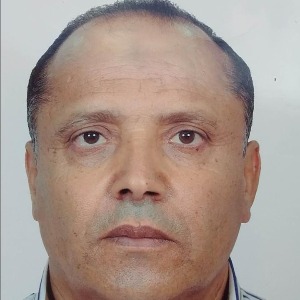Title : Using therapeutic exercises to rehabilitate the biceps femoris muscle to reduce lower back pain
Abstract:
Introduction: The positive role of the means and methods of physical therapy and rehabilitation appears, and therapeutic exercises are considered one of the most important of these methods at this stage because of their positive effect on it. However, positive exercises should not be used in the acute stage, but after passing this stage, therapeutic exercises can be performed with the need to take care of strengthening the muscles. The affected area is relaxed, in addition to strengthening the abdominal, thigh, and knee muscles. Some exercises must be performed in order to stimulate blood circulation, prevent blood clots in the veins, and maintain the flexibility of the joints and the muscle tone of the muscles.
Rehabilitation exercises are considered one of the most important and indispensable therapeutic methods in rehabilitating injuries (muscles, ligaments, and joints) by applying a set of protocols in treating these injuries, especially Isometric static exercises and Isotonic kinetic exercises, and their extensive use has recently been observed by sports medicine specialists. And therapeutic rehabilitation due to its positive results in restoring healing to the injured organ.
Aims: The research Objectives to identify the effect of using therapeutic exercises to rehabilitate the biceps femoris muscle to reduce lower back pain by identifying:
1.Reducing the degree of lower back pain.
2.Improving the flexibility of the pelvic joint and the lumbar region.
Method: The population consisted of patients (men) who suffer from lower back pain and tests have proven that the cause of the pain is weakness of the thigh muscles, and who are referred by the doctor to the physical therapy department at Sukna Rural Hospital. The samples were nine (9) cases who were intentionally selected from patients (men) who suffer from lower back pain. Medical examinations and clinical diagnosis proved that the main cause of this pain is weakness of the thigh muscles. They were referred by the doctor to the physical therapy department at Sukna Rural Hospital. A statistical description of the homogeneity of the sample in the variables under study was carried out before applying the program, and the values of the coefficient of flatness ranged between (“-2.240” – “0.708”), and these values are limited to (+3, -3), and the values of the coefficient of relative variation ranged from Between (1.82% - 18.37%), all of which are less than 30%, which indicates the homogeneity of the sample in all variables under study.
Conclusions: There is a positive effect of using the suggested therapeutic exercises to rehabilitate the biceps femoris muscle to reduce lower back pain through:
1.There are statistically significant differences between the pre- and post-measurements, in favor of the post-measurement, in the variable degree of pain.
2.There are statistically significant differences between the pre- and post-measurements, in favor of the post-measurement, in the variable of flexibility of the pelvis and lumbar region.
Recommendations: In light of the conclusions reached by the study, the student recommends the following:
1.Encouraging patients suffering from lower back pain to continue and commit to performing the suggested therapeutic exercises.
2.Be guided by the proposed therapeutic program in treating similar cases that suffer from lower back pain resulting from a shortening of the biceps femoris muscle.
3.Be guided by the proposed therapeutic program in treating other injuries related to the biceps femoris muscle, such as knee and ligament injuries.
4.Use other therapeutic means and methods to rehabilitate the biceps femoris muscle to reduce lower back pain.
5.Paying attention to the process of codifying therapeutic exercises according to a medical prescription so that it suits each individual patient.
6.Conduct more studies and scientific research on therapeutic exercise programs on different samples and at different ages.



